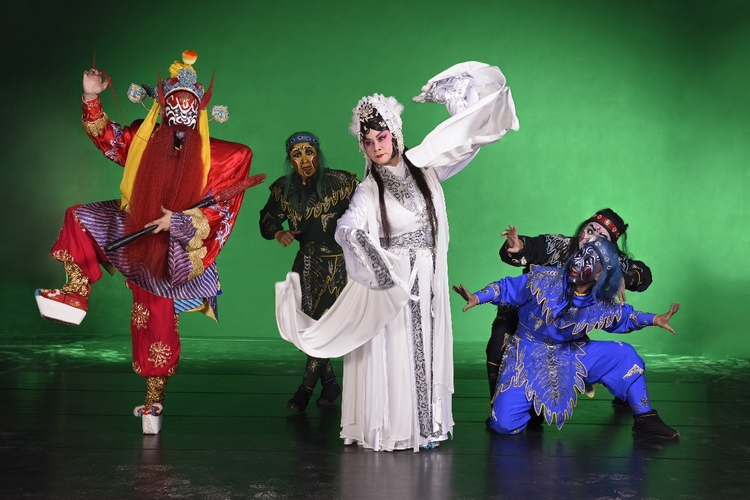The spirits of those who have died unnatural deaths, in particular those killed as a result of the machinations of others, the cruelty of government or malice of a system beyond their control are known as Victim Ghosts 冤鬼 or 冤魂, short for 冤屈鬼魂. The spirits of those who suffer ‘unjust deaths’ are thought to wander untethered, caught between the Afterlife and This World in search of redress or revenge. Such disturbed spirits feature in literature and cinema. One of the most famous wandering ghosts is that of Nie Xiaoqian 聶小倩, who first appears in Pu Songling’s Strange Tales from a Chinese Studio and features in many ghost movies (see the section Hong Kong Haunts 香港鬼打鬼).
During the Maoist era, Communist Party leaders became increasingly suspicious of theatrical works and films in which vengeful spirits and ghosts appeared. The most noteworthy of these was the Ming-dynasty work The Pavilion of Red Plum Blossoms 紅梅閣, adapted in the late 1950s as Li Huiniang 李慧娘, named after the protagonist of the original story. In the early 1960s, Li Huiniang was produced both for the stage and as a film.
Li Huiniang is about a beautiful girl entrapped by a powerful official who has killed her father. When Li expresses admiration for a handsome man who had previously shown her kindness, the jealous official murders her. The girl’s spirit returns to the human realm to free her lover and to exact revenge.
In the charged political atmosphere of the early 1960s, as China struggled to recover from the famine of the Great Leap Forward era, Party leaders saw in this popular work an implicit criticism of their deadly policies and the were concerned that it gave expression to a popular desire for revenge. Li Huiniang was condemned and other works dealing with ghosts and wronged spirits, 鬼戲, were banned.

***
When marking the Duanyang Festival on the Fifth Day of the Fifth Month, we commemorated the poet Qu Yuan, a man who is said to have killed himself in despair at the state of the world. Writers, thinkers and political activists are among the most widely acknowledged Victim Ghosts in Chinese history. During the People’s Republic their numbers increased considerably. While many have been acknowledged officially, untold numbers of those who died as a result of state policies from the early 1950s remain unnamed.
- For a partial list of those who suffered unnatural deaths during the Cultural Revolution era, see 文化革命受難者列表.
- On the fate of the Red Guards who have ‘died a second death’ because of official attempts to expunge them from the public record, see Everett Y. Zhang, ‘Grieving at Chongqing’s Red Guard Graveyard’, The China Journal, no.70 (July 2013): 24-47.
- For a study of Li Huiniang, see Maggie Greene, ‘A Ghostly Bodhisattva and the Price of Vengeance: Meng Chao, “Li Huiniang”, and the Politics of Drama, 1959-1979’, Modern Chinese Literature and Culture, vol.24, no.1 (Spring, 2012): 149-199.
— The Editor, China Heritage

